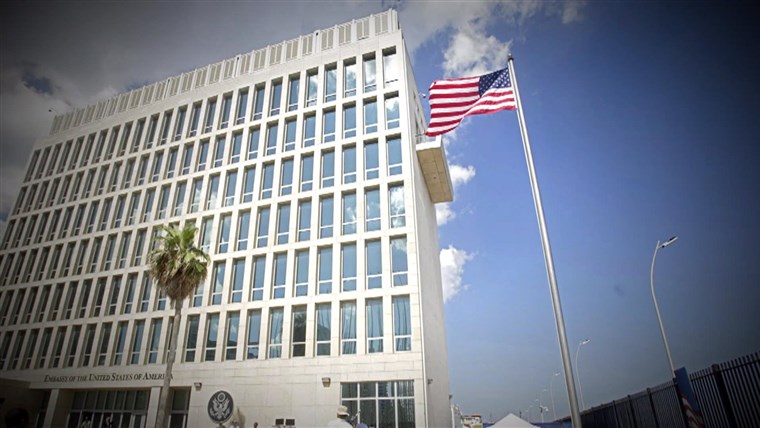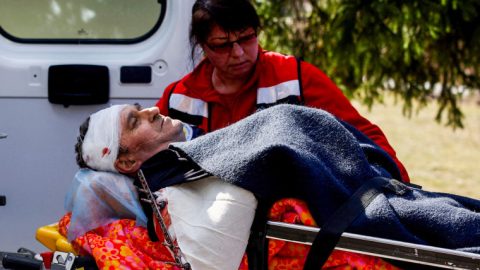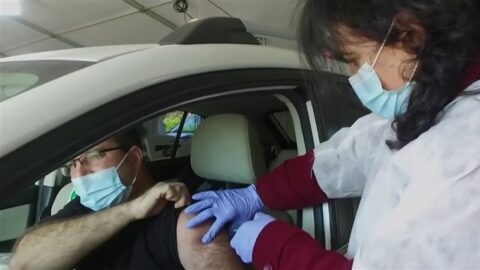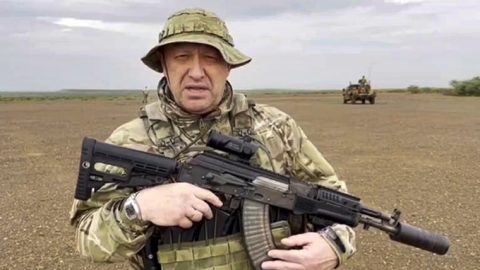The mysterious neurological symptoms experienced by American diplomats in China and Cuba are consistent with the effects of directed microwave energy, according to a long-awaited report by the National Academies of Sciences that cites medical evidence to support the long-held conviction of American intelligence officials.
The report, obtained Friday by NBC News, does not conclude that the directed energy was delivered intentionally, by a weapon, as some U.S. officials have long believed. But it raises that disturbing possibility.
The report was transferred to Congress after bipartisan calls led by U.S. Senator Jeanne Shaheen, a Democrat from New Hampshire who is a senior member of the Senate Foreign Relations and Armed Services Committees. She issued the following statement: “The health effects from these mysterious injuries have tormented those afflicted. Their illnesses and suffering are real and demand a response from Congress. American public servants and their families – who have been targeted – have requested that Congress receive and review this report, so I’m glad the State Department heeded our bipartisan call so we can get to work. “
NBC News reported in 2018 that U.S. intelligence officials considered Russia a leading suspect in what some of them assess to have been deliberate attacks on diplomats and CIA officers overseas. But there was not — and is not now — conclusive intelligence pointing in that direction, multiple officials who have been briefed on the matter said.
A team of medical and scientific experts who studied the symptoms of as many as 40 State Department and other government employees concluded that nothing like them had previously been documented in medical literature, according to the National Academies of Sciences report. Many reported hearing a loud sound and feeling pressure in their heads, and then experienced dizziness, unsteady gait and visual disturbances. Many suffered longstanding, debilitating effects.
“The committee felt that many of the distinctive and acute signs, symptoms and observations reported by (government) employees are consistent with the effects of directed, pulsed radio frequency (RF) energy,” the report says. “Studies published in the open literature more than a half-century ago and over the subsequent decades by Western and Soviet sources provide circumstantial support for this possible mechanism.”
While important questions remain, “the mere consideration of such a scenario raises grave concerns about a world with disinhibited malevolent actors and new tools for causing harm to others, as if the U.S. government does not have its hands full already with naturally occurring threats,” says the report, edited by Dr. David Relman, a professor in medicine, microbiolology and immunology at Stanford, and Julie Pavlin, a physician who leads the National Academies of Sciences global health division in Washington.
In the last year, as first reported by GQ Magazine and The New York Times, a number of new incidents have been reported by CIA officers in Europe and Asia, including one involving Marc Polymeropoulos, who retired last year after a long and decorated career as a case officer. He told NBC News he is still suffering the effects of what he believes was a brain injury he sustained on a trip to Moscow.
A source directly familiar with the matter told NBC News the CIA, using mobile phone location data, had determined that some Russian intelligence agents who had worked on microwave weapons programs were present in the same cities at the same time that CIA officers suffered mysterious symptoms. CIA officials consider that a promising lead but not conclusive evidence.
The State Department, responding to the report, said that “each possible cause remains speculative” and added that the investigation, now three years old, is still “ongoing.” Although it praised the National Academies of Sciences for undertaking the effort, the State Department offered a long list of “challenges of their study” and limitations in the data the academies were given access to, suggesting that the report should not be viewed as conclusive.
“While the above limit the scope of the report, they do not lessen its value,” the State Department said in an emailed statement. “We are pleased this report is now out and can add to the data and analyses that may help us come to an eventual conclusion as to what transpired.”
The CIA did not immediately respond to a request for comment late Friday. Russia has denied any involvement in the incidents.
The National Defense Authorization Act released this week included language from Shaheen that will expand long-term, emergency care benefits for affected U.S. government employees and their dependents. “Much more must be done to uncover the source of these incidents and ensure that no other public servant suffers in this way,” says Shaheen, whose statement points out that “patients and public reports have indicated that these injuries are the result of a nefarious attack.”
The study examined four possibilities to explain the symptoms: Infection, chemicals, psychological factors and microwave energy.
“Overall, directed pulsed RF energy … appears to be the most plausible mechanism in explaining these cases among those that the committee considered. … The committee cannot rule out other possible mechanisms and considers it likely that a multiplicity of factors explains some cases and the differences between others.”
The report says more investigation is required.
Electromagnetic energy, including frequencies such as radio and microwave, have been considered a leading possibility since the earliest days of the mystery. Early on, investigators also considered the possibility that sound waves, toxins or other mechanisms could have been involved, although no evidence is known to have emerged to support those theories.
Over the years, the FBI, CIA, U.S. military, State Department’s Diplomatic Security Service, National Institutes of Health and Centers for Disease Control and Prevention have investigated the incidents. None has come forward with any conclusions, and the State Department has quietly ceased using the word “attacks” to describe what happened, as then-Secretary of State Rex Tillerson and other top officials did in the early days after the incidents first came to light publicly in 2017.
Starting in late 2016, U.S. diplomats and other government workers stationed in Havana began hearing strange sounds and experiencing bizarre physical sensations and then fell ill. The incidents caused hearing, balance and cognitive changes along with mild traumatic brain injury, also known as concussion.
More than two dozen U.S. workers who served in Cuba and a smaller number of Canadians were confirmed to have been affected, in addition to one U.S. government worker in China who was judged in 2018 to have experienced similar symptoms.
For some of the affected employees, those symptoms have resolved and the individuals have eventually been able to return to relatively normal lives. For others, the effects have lingered and posed an ongoing and significant obstacle to their work and well-being, according to NBC News interviews with U.S. officials who were assessed by the government to have been affected.
Cuba has adamantly and consistently denied any knowledge or involvement in the incidents. In late 2018, NBC News reported that U.S. intelligence agencies investigating the incidents considered Russia to be the main suspect, based on interviews with three U.S. officials and two others briefed on the investigation.
Some outside medical experts uninvolved in the investigation have speculated the workers might have simply suffered from mass hysteria. But doctors who evaluated the patients at the University of Pennsylvania, including through advanced brain imaging, found differences in their brains, including less white matter and connectivity in the areas that control vision and hearing than similar healthy people.
Secretary of State Mike Pompeo, asked in October about the investigation, indicated there was still no firm conclusion, although he bristled at the allegations that have been raised by many of the affected diplomats that the State Department took insufficient steps to protect them and ensure adequate care after they were injured.
“We’ve done a lot of work to try and identify how this all took place,” Pompeo said. “And we continue to try and determine precisely the causation of this while doing our best to make sure we’re taking care of the health and safety of these people.”
The report recommends that the State Department establish a response mechanism for similar incidents that allows new cases to be studied more quickly and effectively.
- The NAS report details many of the challenges of their study: different data points collected by the several referral centers the Department utilized; data collected from individuals tailored to their individual signs and symptoms, and at markedly different points in time for the affected individuals; limited access because of potential security concerns or ongoing active investigations; and, most importantly, limited access to personalized data, and working, instead, with collective or pooled data. While the above limit the scope of the report, they do not lessen its value.










Recent Comments